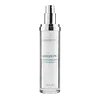What's inside
What's inside
 Key Ingredients
Key Ingredients

 Benefits
Benefits

 Concerns
Concerns

 Ingredients Side-by-side
Ingredients Side-by-side

Water
Skin ConditioningGlycerin
HumectantCetearyl Alcohol
EmollientIsononyl Isononanoate
EmollientPyrus Malus Fruit Extract
Skin ConditioningPotassium Cetyl Phosphate
EmulsifyingTribehenin
EmollientGlyceryl Caprylate
EmollientSodium Polyacryloyldimethyl Taurate
Emulsion StabilisingDisodium Lauriminodipropionate Tocopheryl Phosphates
CleansingSqualane
EmollientLactobacillus Ferment
Skin ConditioningSilica
AbrasivePropanediol
SolventTrisodium Ethylenediamine Disuccinate
Caprylic/Capric Triglyceride
MaskingLycium Barbarum Fruit Extract
AstringentBetaine
HumectantGlyceryl Undecylenate
EmollientCetyl Palmitate
EmollientSorbitan Stearate
EmulsifyingPolysorbate 80
EmulsifyingOpuntia Ficus-Indica Stem Extract
Skin ConditioningCalcium Gluconate
HumectantGluconolactone
Skin ConditioningTremella Fuciformis Sporocarp Extract
AntioxidantSodium Hyaluronate
HumectantCitric Acid
BufferingHydrogenated Lecithin
EmulsifyingGlucose
HumectantHydrolyzed Pea Protein
EmollientTocopherol
AntioxidantSodium Chloride
MaskingPalmitoyl Tetrapeptide-10
Skin ConditioningSodium Succinate
BufferingPhenoxyethanol
PreservativeSodium Benzoate
MaskingBenzoic Acid
MaskingDehydroacetic Acid
PreservativeWater, Glycerin, Cetearyl Alcohol, Isononyl Isononanoate, Pyrus Malus Fruit Extract, Potassium Cetyl Phosphate, Tribehenin, Glyceryl Caprylate, Sodium Polyacryloyldimethyl Taurate, Disodium Lauriminodipropionate Tocopheryl Phosphates, Squalane, Lactobacillus Ferment, Silica, Propanediol, Trisodium Ethylenediamine Disuccinate, Caprylic/Capric Triglyceride, Lycium Barbarum Fruit Extract, Betaine, Glyceryl Undecylenate, Cetyl Palmitate, Sorbitan Stearate, Polysorbate 80, Opuntia Ficus-Indica Stem Extract, Calcium Gluconate, Gluconolactone, Tremella Fuciformis Sporocarp Extract, Sodium Hyaluronate, Citric Acid, Hydrogenated Lecithin, Glucose, Hydrolyzed Pea Protein, Tocopherol, Sodium Chloride, Palmitoyl Tetrapeptide-10, Sodium Succinate, Phenoxyethanol, Sodium Benzoate, Benzoic Acid, Dehydroacetic Acid
Water
Skin ConditioningGlycerin
HumectantCaprylic/Capric Triglyceride
MaskingNiacinamide
SmoothingCetearyl Alcohol
EmollientDimethicone
EmollientPhenoxyethanol
PreservativeCeteareth-20
CleansingBehentrimonium Methosulfate
Caprylyl Glycol
EmollientPolyglyceryl-3 Diisostearate
EmulsifyingSodium Lauroyl Lactylate
EmulsifyingPotassium Phosphate
BufferingDisodium EDTA
Dipotassium Phosphate
BufferingCeramide NP
Skin ConditioningCeramide AP
Skin ConditioningPhytosphingosine
Skin ConditioningCholesterol
EmollientXanthan Gum
EmulsifyingCarbomer
Emulsion StabilisingEthylhexylglycerin
Skin ConditioningSodium Hyaluronate
HumectantCeramide EOP
Skin ConditioningWater, Glycerin, Caprylic/Capric Triglyceride, Niacinamide, Cetearyl Alcohol, Dimethicone, Phenoxyethanol, Ceteareth-20, Behentrimonium Methosulfate, Caprylyl Glycol, Polyglyceryl-3 Diisostearate, Sodium Lauroyl Lactylate, Potassium Phosphate, Disodium EDTA, Dipotassium Phosphate, Ceramide NP, Ceramide AP, Phytosphingosine, Cholesterol, Xanthan Gum, Carbomer, Ethylhexylglycerin, Sodium Hyaluronate, Ceramide EOP
 Reviews
Reviews

Ingredients Explained
These ingredients are found in both products.
Ingredients higher up in an ingredient list are typically present in a larger amount.
This ingredient is an emollient, solvent, and texture enhancer. It is considered a skin-softener by helping the skin prevent moisture loss.
It helps thicken a product's formula and makes it easier to spread by dissolving clumping compounds.
Caprylic Triglyceride is made by combining glycerin with coconut oil, forming a clear liquid.
While there is an assumption Caprylic Triglyceride can clog pores due to it being derived from coconut oil, there is no research supporting this.
Learn more about Caprylic/Capric TriglycerideCetearyl alcohol is a mixture of two fatty alcohols: cetyl alcohol and stearyl alcohol. It is mainly used as an emulsifier. Emulsifiers help prevent the separation of oils and products. Due to its composition, it can also be used to thicken a product or help create foam.
Cetearyl alcohol is an emollient. Emollients help soothe and hydrate the skin by trapping moisture.
Studies show Cetearyl alcohol is non-toxic and non-irritating. The FDA allows products labeled "alcohol-free" to have fatty alcohols.
This ingredient is usually derived from plant oils such as palm, vegetable, or coconut oils. There is debate on whether this ingredient will cause acne.
Due to the fatty acid base, this ingredient may not be Malassezia folliculitis safe.
Learn more about Cetearyl AlcoholGlycerin is already naturally found in your skin. It helps moisturize and protect your skin.
A study from 2016 found glycerin to be more effective as a humectant than AHAs and hyaluronic acid.
As a humectant, it helps the skin stay hydrated by pulling moisture to your skin. The low molecular weight of glycerin allows it to pull moisture into the deeper layers of your skin.
Hydrated skin improves your skin barrier; Your skin barrier helps protect against irritants and bacteria.
Glycerin has also been found to have antimicrobial and antiviral properties. Due to these properties, glycerin is often used in wound and burn treatments.
In cosmetics, glycerin is usually derived from plants such as soybean or palm. However, it can also be sourced from animals, such as tallow or animal fat.
This ingredient is organic, colorless, odorless, and non-toxic.
Glycerin is the name for this ingredient in American English. British English uses Glycerol/Glycerine.
Learn more about GlycerinPhenoxyethanol is a preservative that has germicide, antimicrobial, and aromatic properties. Studies show that phenoxyethanol can prevent microbial growth. By itself, it has a scent that is similar to that of a rose.
It's often used in formulations along with Caprylyl Glycol to preserve the shelf life of products.
Sodium Hyaluronate is hyaluronic acid's salt form. It is commonly derived from the sodium salt of hyaluronic acid.
Like hyaluronic acid, it is great at holding water and acts as a humectant. This makes it a great skin hydrating ingredient.
Sodium Hyaluronate is naturally occurring in our bodies and is mostly found in eye fluid and joints.
These are some other common types of Hyaluronic Acid:
Learn more about Sodium HyaluronateWater. It's the most common cosmetic ingredient of all. You'll usually see it at the top of ingredient lists, meaning that it makes up the largest part of the product.
So why is it so popular? Water most often acts as a solvent - this means that it helps dissolve other ingredients into the formulation.
You'll also recognize water as that liquid we all need to stay alive. If you see this, drink a glass of water. Stay hydrated!
Learn more about Water